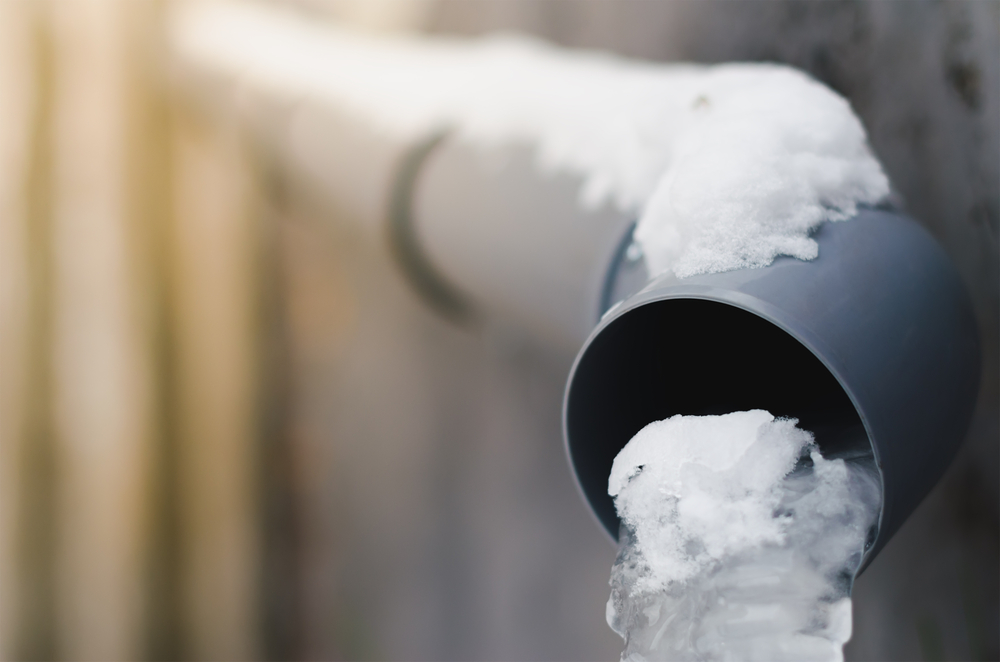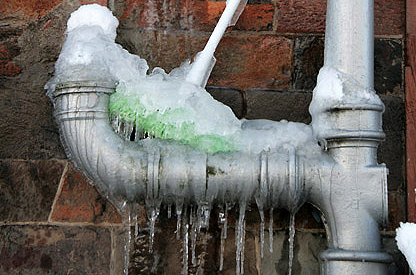Important Tips to Avoid Frozen Pipes in Cold Weather: Expert Insights
Important Tips to Avoid Frozen Pipes in Cold Weather: Expert Insights
Blog Article
We have stumbled on this article involving 6 Ways to Prevent Frozen Pipes down the page on the net and accepted it made sense to discuss it with you on my blog.

Winter can wreak havoc on your pipes, particularly by freezing pipelines. Here's exactly how to stop it from occurring and what to do if it does.
Intro
As temperatures decrease, the danger of icy pipes boosts, possibly leading to expensive fixings and water damage. Understanding exactly how to stop frozen pipelines is critical for homeowners in cold climates.
Comprehending Frozen Pipelines
What triggers pipelines to ice up?
Pipelines ice up when revealed to temperature levels listed below 32 ° F (0 ° C) for prolonged periods. As water inside the pipes ices up, it broadens, putting pressure on the pipeline wall surfaces and potentially creating them to rupture.
Risks and problems
Icy pipes can cause water system interruptions, property damage, and costly repair work. Ruptured pipes can flooding homes and trigger comprehensive architectural damage.
Indicators of Frozen Pipeline
Determining frozen pipelines early can prevent them from rupturing.
How to recognize frozen pipelines
Search for decreased water circulation from taps, uncommon smells or sounds from pipes, and visible frost on revealed pipelines.
Prevention Tips
Shielding susceptible pipes
Cover pipes in insulation sleeves or use warmth tape to protect them from freezing temperature levels. Focus on pipes in unheated or external areas of the home.
Home heating methods
Keep indoor rooms appropriately heated, specifically locations with plumbing. Open up closet doors to allow cozy air to distribute around pipes under sinks.
Safeguarding Outdoor Plumbing
Garden hoses and outside taps
Detach and drain pipes garden hose pipes before winter months. Mount frost-proof faucets or cover outdoor faucets with insulated caps.
What to Do If Your Pipelines Freeze
Immediate activities to take
If you suspect frozen pipelines, keep faucets open to soothe stress as the ice thaws. Utilize a hairdryer or towels taken in hot water to thaw pipelines slowly.
Long-Term Solutions
Architectural changes
Think about rerouting pipelines away from exterior wall surfaces or unheated locations. Include extra insulation to attics, basements, and crawl spaces.
Updating insulation
Buy top notch insulation for pipelines, attics, and walls. Proper insulation aids keep consistent temperatures and decreases the risk of frozen pipes.
Conclusion
Stopping frozen pipes calls for positive procedures and quick reactions. By comprehending the causes, signs, and safety nets, home owners can secure their pipes throughout cold weather.
5 Ways to Prevent Frozen Pipes
Drain Outdoor Faucets and Disconnect Hoses
First, close the shut-off valve that controls the flow of water in the pipe to your outdoor faucet. Then, head outside to disconnect and drain your hose and open the outdoor faucet to allow the water to completely drain out of the line. Turn off the faucet when done. Finally, head back to the shut-off valve and drain the remaining water inside the pipe into a bucket or container. Additionally, if you have a home irrigation system, you should consider hiring an expert to clear the system of water each year.
Insulate Pipes
One of the best and most cost-effective methods for preventing frozen water pipes is to wrap your pipes with insulation. This is especially important for areas in your home that aren’t exposed to heat, such as an attic. We suggest using foam sleeves, which can typically be found at your local hardware store.
Keep Heat Running at 65
Your pipes are located inside your walls, and the temperature there is much colder than the rest of the house. To prevent your pipes from freezing, The Insurance Information Institute suggests that you keep your home heated to at least 65 degrees, even when traveling. You may want to invest in smart devices that can keep an eye on the temperature in your home while you’re away.
Leave Water Dripping
Moving water — even a small trickle — can prevent ice from forming inside your pipes. When freezing temps are imminent, start a drip of water from all faucets that serve exposed pipes. Leaving a few faucets running will also help relieve pressure inside the pipes and help prevent a rupture if the water inside freezes.
Open Cupboard Doors
Warm your kitchen and bathroom pipes by opening cupboards and vanities. You should also leave your interior doors ajar to help warm air circulate evenly throughout your home.

Do you like more info about 6 Ways to Prevent Frozen Pipes? Post a comment further down. We will be delighted to hear your insights about this blog post. Hoping to see you back again later on. For those who enjoyed reading our article please do not forget to pass it around. Thanks a lot for going through it.
Get A Free Estimate Report this page